
Encoding the wind in a perennial form for the future
Topique-vent : Anémochories is an installation made up of four Savonnières stone sculptures with inlaid basalt carvings, designed for the Village des Athlètes in Saint-Ouen. These organic forms represent current ripples based on a study of the local wind, the breeze coming from the north-east and crossing Avenue Cesaria Evora. The four sculptures increase in size the closer they are to the Seine, as a way of connecting wind and water. They are completed by a toposcope or orientation table enabling walkers to detect the path of the wind and its effects on the Athletes' Village.
Topique-vent : Anemochories establishes a reciprocal relationship with the site. The basalt stone waste from the cutting process is used to fertilise the soil. In return, the sculptures vegetate over time, heralding the neighbourhood's Heritage period.


The wind study influenced the development of the ZAC Olympic and Paralympic Village.Controlling the wind has enabled us to manage flows to cool, ventilate and adapt the avenue Cesarie Evoria to climate change. Wind is also a flow that reminds us of an invariant and connects eras. The north-easterly breeze that crosses the site, with a speed of 2.7 m/s (a frequent direction during heatwaves), will also be present in 10 or 20 years' time.
When the wind blows, it leaves traces in its path known as "ripples". We see these on beaches and dunes when sediments are stirred up by wind action. These ripples are determined by several parameters, such as wind direction and speed, grain size and height. Based on this principle and the study of the Promenade Cesaria Evora, Topique-vent: anémochories "codes" the wind present on the site and proposes its representation sculpted in stone, in the form of current ripples, enabling present or future users to understand where the breeze comes from.
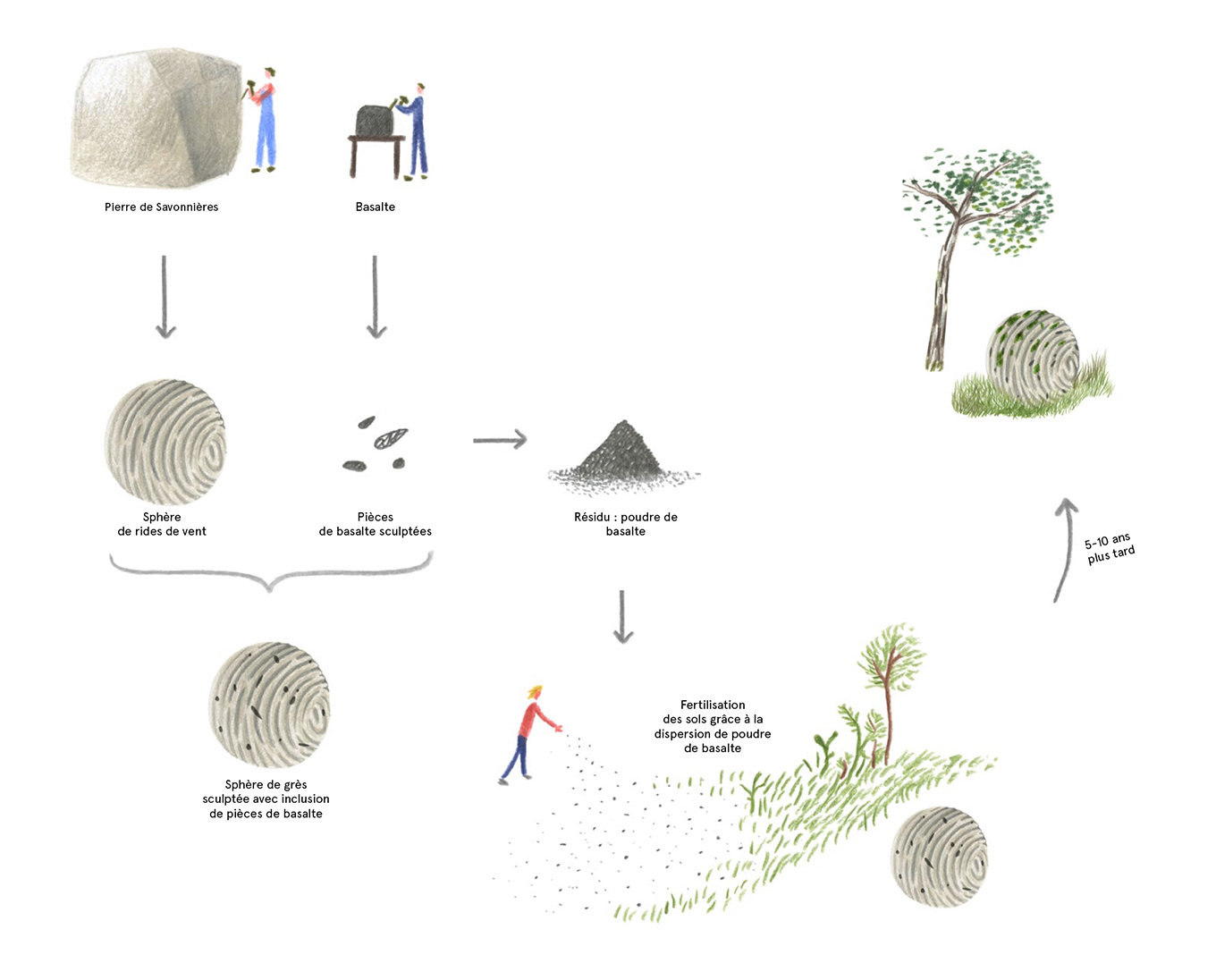
Every year, billions of tons of dust rise into the atmosphere, lifted by storms and winds, and circulate around the Earth. Among them are fungal spores, pollen, diatoms and insect wings. Anemochory is the main wind-driven mode of plant seed dispersal, affecting around 90% of all plant species.

A representation of these basalt-cut elements are thus inlaid into the Savonnières stone sculpture.
To foster a symbiotic relationship between the sculpture and the site, the artist uses the residues from the cutting of basalt pieces to fertilize the planted space and accompany the vegetation of the work over time. By taking moss cuttings at the beginning of the Inheritance period, the work will begin a slow vegetation process.

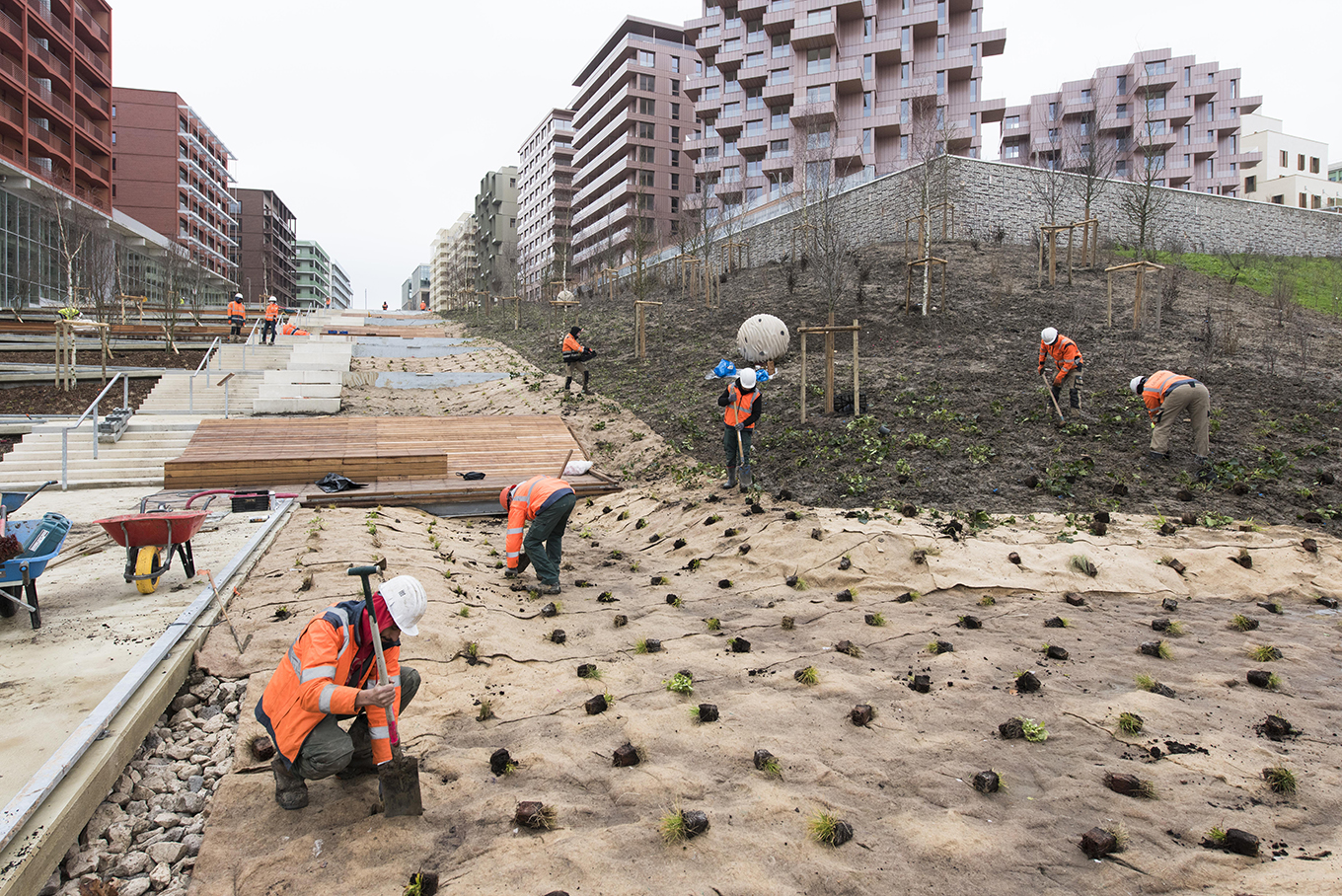
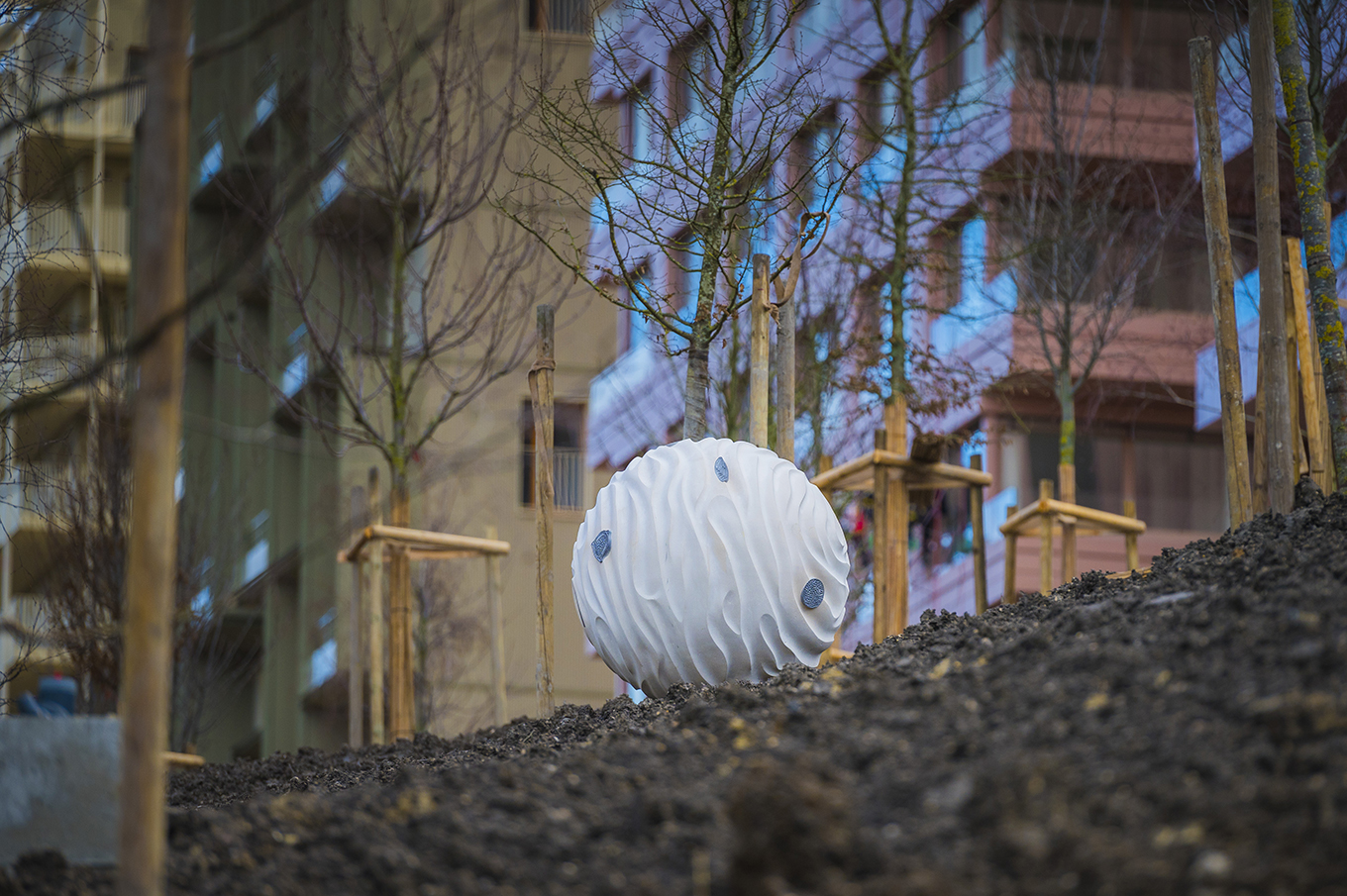
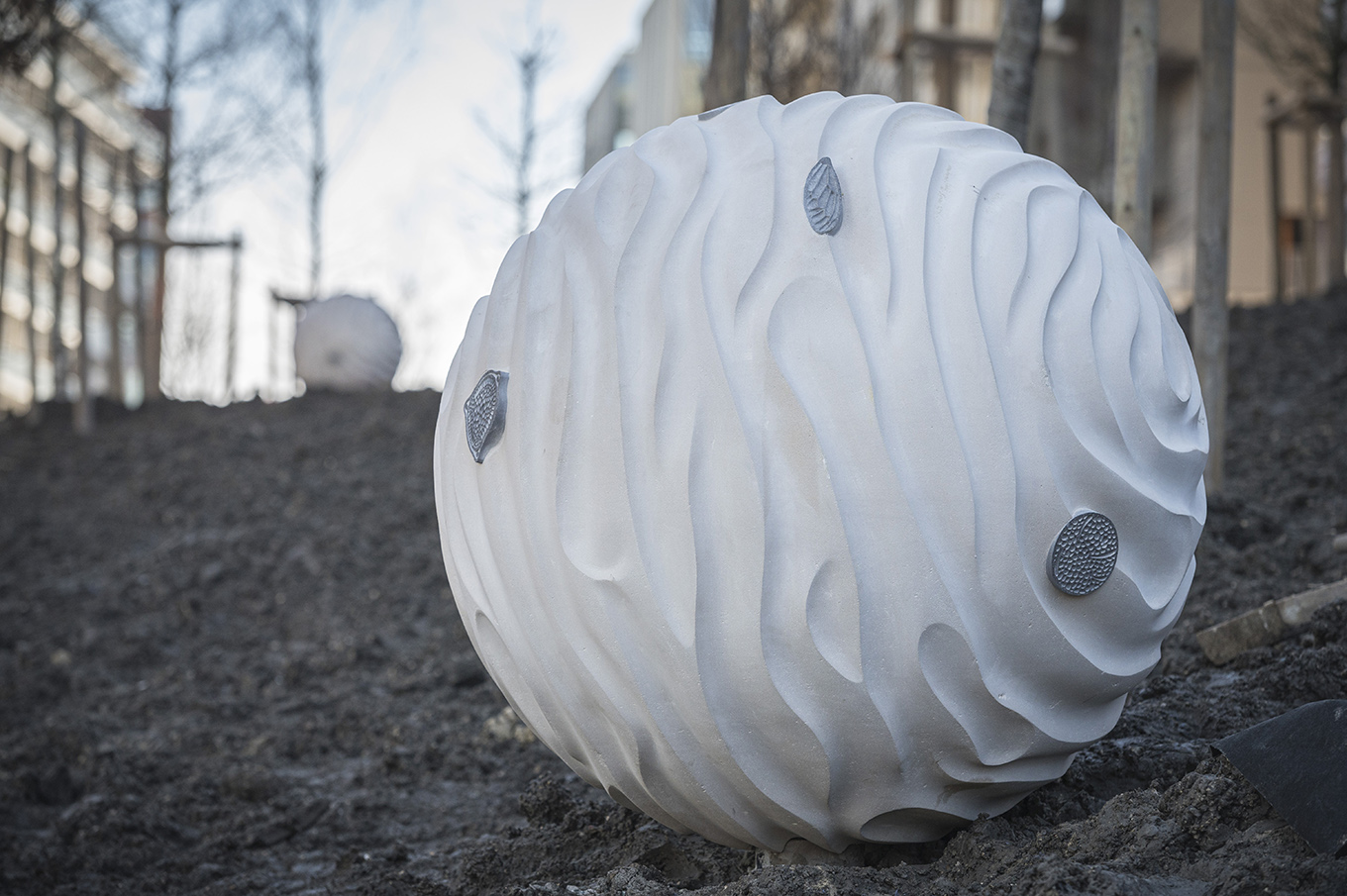

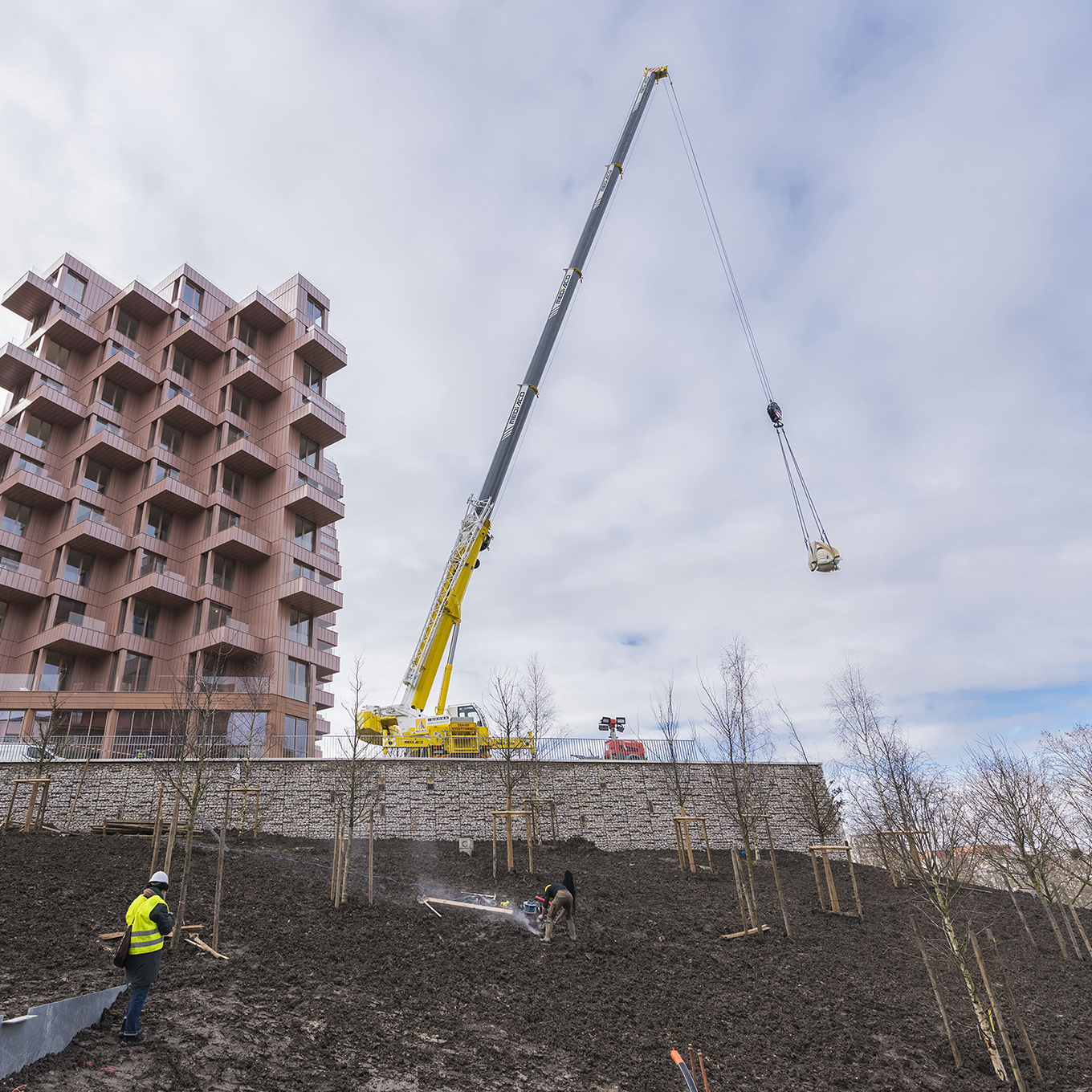

Team: Artistic commission in collaboration with Marianne Homiridis / Bureau des Projets, Alain Bertaud, stonemason. Studio Idaë collaboration: Pauline Avrillon, Jonathan Roditi, Pia Debray-Sandelin (intern).
Commissioned by: SOLIDEO
Artistic direction of the Courants Fertiles: Gaël Charbau and Manifesto
Commissioned by: SOLIDEO
Artistic direction of the Courants Fertiles: Gaël Charbau and Manifesto